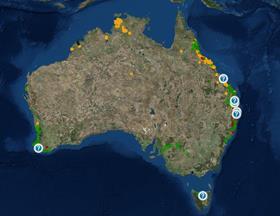
An online map is the latest tool being used to enhance Australia’s biosecurity response and planning capability.
The map shows commercial avocado, mango and macadamia crops around the country, and will be used to identify exactly where host crops are during biosecurity outbreaks.
The map has been formulated with satellite imagery generated by scientists, land-use information from industry and government and information collected via a purpose-built app.
Horticulture Innovation Australia chief executive John Lloyd said while contributors have made more than 1,000 entries via the Land Use Survey app, there is plenty more work to be done. He urged all avocado, mango and macadamia growers across the country to lend their support.
“This new map allows growers to help safeguard the future of their industries by pin pointing where farms are, helping their industry bodies and relevant agencies plan and enact biosecurity measures during serious pest and disease incursions,” he said.
“So we are encouraging growers to grab their smartphones, tablets or laptops, review the map and add their comments to help support their industries through this ambitious land-use mapping project.”
The new map will also help with recovery efforts after severe weather events, and has the potential to assist growers with insurance claims. It was used by industry bodies to determine the extent of damage caused by Cyclone Debbie, which crossed the North Queensland coast last month.
The project is being led by the University of New England, with support from Horticulture Innovation Australia through funding from the Australian Government Department of Agriculture and Water Resources.



